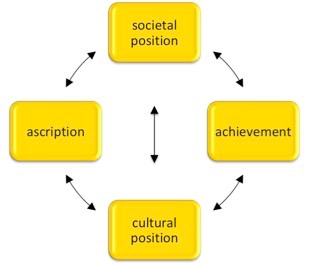Sign up for FlowVella
Sign up with FacebookAlready have an account? Sign in now
By registering you are agreeing to our
Terms of Service
Loading Flow

In trying to get a grip on the problems of multicultural society. Cor Luijsterburg developed a simple but effective model in his textbook for Dutch secondary education. It highlights the key processes that result in social categorisation (positive or negative, the latter highlighted in the media) and its consequences (again working in both directions). On the left hand side it indicates how governments, organisations and individuals emphasise or exaggerate the differences between ethnic groups in society. In the middle you see the societal position of ethnic groups at the top and their cultural position at the bottom. On the right the model shows the attitudes of ethnic groups in stressing the differences with the population of the host country. If you consider all the implications and interactions, you may easily acknowledge the range of related problems (socialisation, identity, xenophobia, fear, discrimination, racism, involvement, opportunities, institutions, fundamentalism and so on) and the necessity of involving everyone in solving them.
Scheffer’s [publicist] statement from 2000 is still valid: ‘Below the surface of public life a sea of stories on the clash of cultures flows, stories that are not heard or to a limited degree.
Hans Wansink, de Volkskrant (Dutch newspaper), April 5th 2008
Immigration makes a country richer, especially financially. People from outside the borders provide more knowledge, new ideas, greater creativity, other expertise and also work harder. … Regrettably, the populists will probably also there … shout down the calculators.
Peter de Waard, de Volkskrant (Dutch newspaper), November 13th 2014
Then again, this seems to be case in most European countries, where fear of immigration will undeniably hamper immigrants’ ability to assimilate some form of the host cultures. Culture appears as much as a form of inclusion as well as a form of rejecting individuals, and the fine line between the two is quite difficult to localise.
student at Maastricht University

One additional remark on this model: I shaped the boxes as buttons, indicating you might push them although that is hard to do in reality.
At the level of society
Problems at the level of society